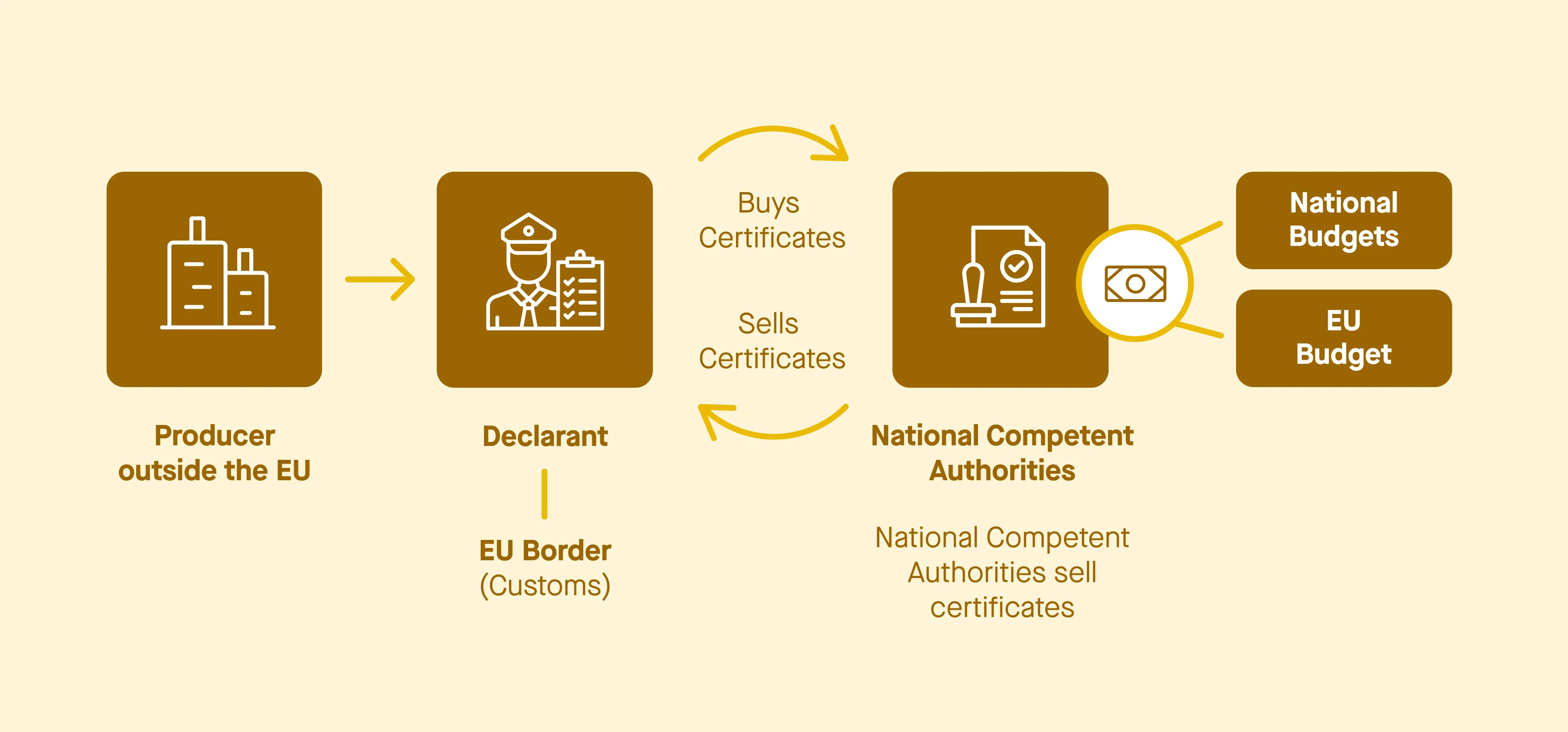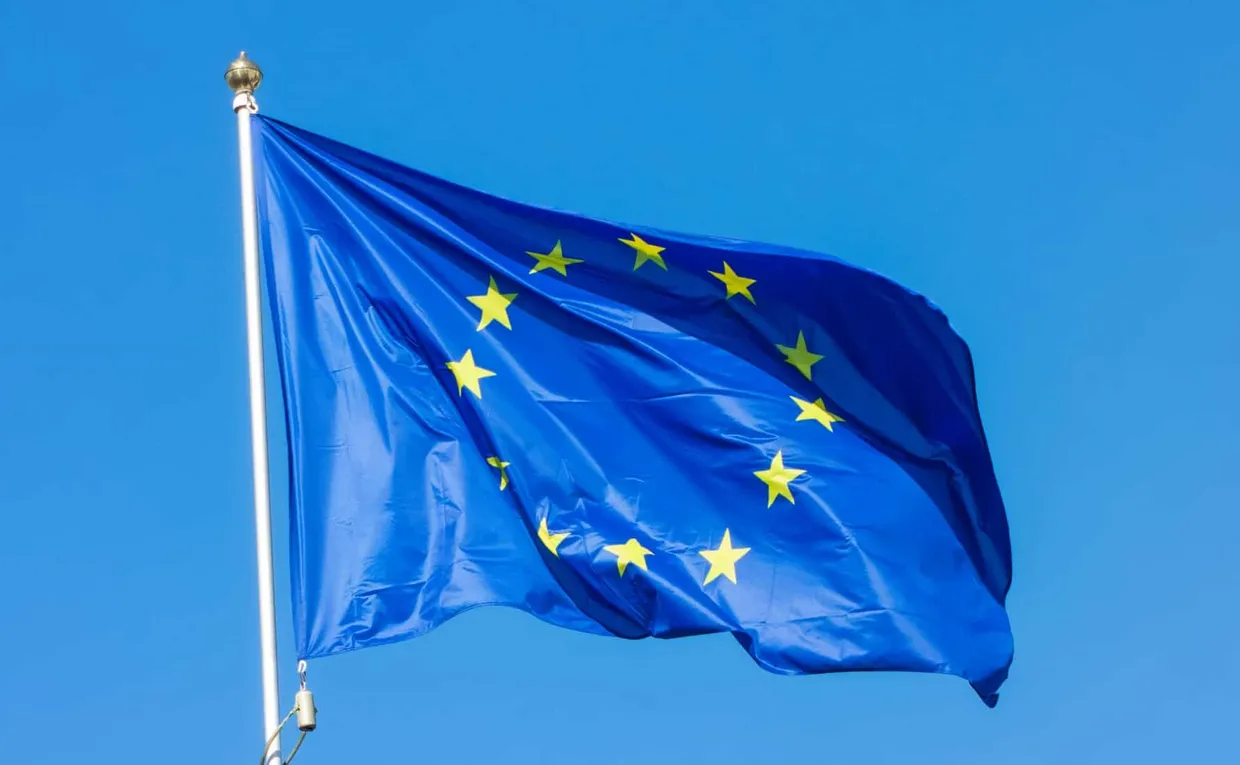The Carbon Border Adjustment Mechanism (CBAM) is a key component of the European Union’s Green Deal, aiming to address the risk of carbon leakage—when companies move production to countries with weaker climate regulations.
As CBAM impacts international trade, climate policy, and global supply chains, businesses need to understand its significance and prepare for the regulatory changes ahead.
What is the Carbon Border Adjustment Mechanism (CBAM)?
The Carbon Border Adjustment Mechanism (CBAM) is a tariff on imports, designed to reduce global emissions by holding non-EU manufacturers accountable for the greenhouse gases emitted during the production of goods sold in the EU.
CBAM targets carbon-intensive industries and ensures that importers of goods from within these industries pay a carbon price equivalent to that of European producers. In doing so, it encourages more sustainable production practices globally and ensures that domestic producers are not unfairly disadvantaged by carbon pricing policies.
The CBAM will initially apply to imports of certain goods and selected precursors whose production is at significant risk of carbon leakage. The sectors covered in the first phase of CBAM include cement, iron and steel, aluminium, fertilisers, electricity, and hydrogen.

How does CBAM work?
The CBAM operates by requiring EU importers to purchase carbon certificates that correspond to the carbon price that would have been paid if the goods were produced under the EU’s carbon pricing rules. The price of these certificates is calculated based on the weekly average auction price of EU ETS allowances, expressed in euros per tonne of CO2 emitted. Importers must declare the emissions embedded in their imports and surrender the corresponding number of certificates each year. If importers can demonstrate that a carbon price has already been paid during the production of the imported goods, the corresponding amount can be deducted, preventing double taxation and ensuring fairness in the system.
Link to EU Emissions Trading System
The CBAM is closely linked to the EU Emissions Trading System (EU ETS), the world’s first international emissions trading scheme. The EU ETS sets a cap on the amount of greenhouse gas emissions that can be released from industrial installations in certain sectors. Companies must buy allowances on the ETS trading market, although a certain number of free allowances are distributed to prevent carbon leakage. Over time, CBAM will progressively become an alternative to the EU ETS, with the number of free allowances for all sectors declining. This transition ensures a comprehensive approach to carbon pricing and reinforces the EU’s commitment to reducing greenhouse gas emissions.

How will CBAM be applied?
The application of CBAM will be gradual, starting with a transition period in 2023 and moving toward full implementation in 2026. This timeline gives businesses time to adjust to the new reporting requirements and prepare for the financial implications.
2023-2025: Transition period
During the transition period (1 October 2023 to 31 December 2025), CBAM is focussing on gathering data. Companies importing goods from non-EU countries into the EU will need to submit quarterly reports detailing the embedded emissions in their products. This includes both direct emissions from production and indirect emissions associated with energy use.
At this stage, EU importers will not need to purchase CBAM certificates. The reporting phase is just designed to provide a clearer picture of the carbon emissions linked to imports and help businesses prepare for the next phase.
2026: Full implementation
From 1 January 2026, CBAM will be fully implemented. Importers will be required to purchase CBAM certificates to cover the greenhouse gases emitted during the production of their imported goods. The price of the certificates will be aligned with the weekly average auction price of allowances in the EU ETS.
This phase introduces direct financial obligations. The more carbon-intensive the production process, the more certificates importers will need to purchase, leading to higher costs for imports with high embedded emissions. This will drive companies to evaluate their supply chains and consider alternatives, such as sourcing from regions with low carbon intensity.
Post-2026: Adjustments and future developments
CBAM will evolve alongside the EU’s broader climate strategy. Sectors that currently benefit from free allowances under the EU ETS—such as those with the highest risk of carbon leakage—may eventually see these allowances phased out. CBAM is expected to expand in scope to cover more industries, ensuring a comprehensive approach to carbon pricing across all sectors.
Reporting and compliance
To ensure compliance with CBAM, importers must register with national authorities and declare the quantity of goods and their embedded emissions imported into the EU.
To facilitate this process, the European Commission has developed a CBAM Transitional Registry. This registry is designed to help importers manage and report their CBAM obligations efficiently. Importers can access the registry by requesting access through the National Competent Authority (NCA) of the Member State where they are established. This structured approach ensures that all importers adhere to the border adjustment mechanism CBAM requirements, promoting transparency and accountability in reporting embedded emissions.
What does CBAM mean for carbon markets?
CBAM is poised to reshape global carbon markets by extending the EU’s carbon pricing framework to imports. By making the embedded emissions of products a central part of import costs, CBAM effectively broadens the reach of carbon pricing beyond the EU.
One key outcome of CBAM’s introduction will be increased pressure on non-EU countries to adopt their own carbon pricing mechanisms. As countries look to maintain access to the EU market, they may be encouraged to implement carbon taxes or cap-and-trade systems to align with EU requirements. This could drive the creation of more low-carbon intensity products and potentially lead to greater international cooperation on carbon pricing.
For businesses, CBAM represents both a challenge and an opportunity. Companies exporting to the EU will need to assess the greenhouse gases emitted during production and evaluate how to reduce emissions to minimize carbon costs. Over time, this could spur investment in green technologies and renewable energy, as companies seek to lower the embedded emissions of their products.
How can companies prepare?
With CBAM’s full implementation approaching, companies need to take proactive steps to ensure they are prepared for the upcoming changes. There are several strategies businesses can adopt to mitigate the impact of CBAM on their operations.
1. Analyze your emissions
The first step for businesses is to understand the embedded emissions associated with their products. Companies should conduct thorough carbon footprint analyses, covering both direct emissions from production and indirect emissions from energy consumption. This will allow companies to identify areas where emissions can be reduced and plan accordingly for the financial costs of CBAM.
2. Engage with your supply chain
CBAM will require EU importers to collect accurate emissions data from their suppliers. To prepare, companies need to establish strong communication channels with suppliers and ensure that the necessary data is available. This may involve working closely with suppliers to calculate the carbon footprints of specific products and gathering the data required for compliance with CBAM.
3. Evaluate financial risks
Businesses should conduct a scenario analysis to assess the financial impact of CBAM on their operations. This includes estimating the cost of purchasing CBAM certificates for goods imported into the EU and evaluating whether it would be more cost-effective to switch to suppliers with low carbon intensity products or relocate production within the EU.
4. Assess compliance systems
Companies will need robust internal systems for tracking emissions and ensuring compliance with CBAM. This includes establishing processes for gathering and reporting emissions data, as well as purchasing and managing CBAM certificates. Large organizations may need to assign specific roles and responsibilities for handling CBAM compliance across departments.
5. Check for carbon price in the country of origin
Finally, businesses should investigate whether their suppliers in non-EU countries are already subject to a carbon pricing system. If carbon costs have been paid during production, EU importers may be able to avoid double taxation by providing proof of these payments. This could reduce the overall financial burden of CBAM.
Support for developing countries
The European Union is committed to supporting developing countries and Least Developed Countries (LDCs) in implementing the CBAM. Recognizing the unique challenges these countries face, the EU will provide technical assistance and capacity-building programs to help them develop their own carbon pricing systems and reduce greenhouse gas emissions.
Additionally, the EU will engage in continuous dialogue with third countries to ensure a smooth transition to the CBAM. This collaborative approach aims to address any concerns or challenges that may arise, fostering a cooperative environment for reducing global greenhouse gas emissions. By offering this support, the EU underscores its commitment to a fair and inclusive approach to carbon pricing and climate action.
Legislative documents and guidance
For those seeking detailed information on the CBAM, the regulation is available in the Official Journal of the EU, along with the CBAM Implementing Regulation for the transitional phase and its annexes. These documents provide comprehensive guidance on the requirements and procedures for compliance.
To assist importers, the European Commission has developed a CBAM Self-Assessment Tool. This tool offers a quick overview for importers to determine whether their goods are subject to CBAM during the transitional period. Additionally, the Commission maintains a Q&A document that addresses frequently asked questions about the CBAM. This document is continuously updated to reflect new developments and provide clarity on various aspects of the mechanism.
By making these resources readily available, the EU ensures that businesses have the necessary information and tools to navigate the CBAM requirements effectively.
Paving the way for a low-carbon future
CBAM marks a significant shift in global trade and climate policy. It plays a crucial role in reducing carbon emissions and promoting decarbonization in high-emitting sectors, through economic incentives like a carbon border tax. As more countries and industries come under the scope of carbon pricing, CBAM could accelerate the transition to a low-carbon intensity global economy.
For companies, early preparation is key to navigating the regulatory landscape and minimizing financial exposure. Those that begin analyzing their supply chains, engaging with suppliers, and reducing emissions now will be better positioned to thrive in a world where carbon costs play an increasingly central role in trade.




